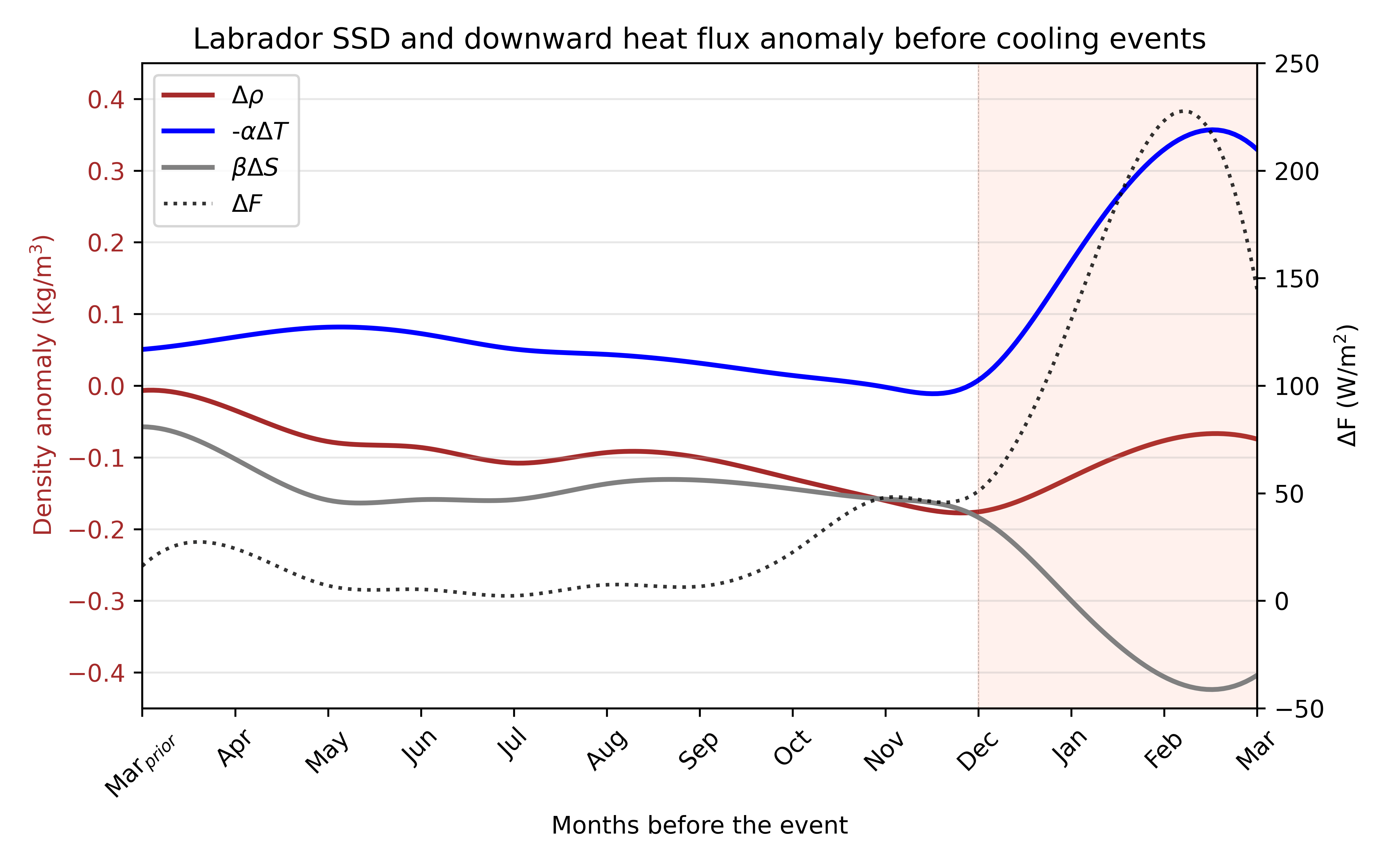Abrupt climate change in the North Atlantic: the subpolar gyre circulation as a tipping element of the climate system
Ocean Sciences, Climate
Research area
The scientific context of my thesis work is that of climate tipping points (CTPs). The risk CTPs. The dramatic impacts associated with CTPs are making them a growing research topic and source of public concern. CTPs occur when change in part of the climate system (tipping element) becomes self-perpetuating beyond a warming threshold as a result of asymmetry in the relevant feedbacks, leading to substantial and widespread Earth system impacts. At the state of the art, five tipping elements have been listed as already susceptible to cross tipping points at the current level of warming of ∼1.1°C above pre-industrial, including the potential collapse of the North Atlantic Subpolar Gyre (SPG) deep convection. Despite existing dynamical interpretations, a comprehensive understanding of the mechanisms behind convection shutdown remains incomplete, requiring addressed studies combining observations and climate models based information.
Project goals
Pre-industrial control simulations from coupled climate models, designed to simulate a stable pre-industrial climate state over time periods of the order of 10^3 years, have been shown to provide meaningful insights about the behavior of SPG in absence of anthropogenic global warming. A first inspection into the pre-industrial control simulation of the Community Earth System Model 2 (CESM2) developed by the National Center for Atmospheric Research (NCAR) suggests that the SPG system, even in the non-forced case, spontaneously explores convection shutdown states. Notably, a positive sea ice cover anomaly east of Greenland emerges four years before the event, coupled with a negative anomaly west of Greenland and strong negative phase of the North Atlantic Oscillation the year of the event, with an abrupt sea surface cooling in the Labrador sea. Defining a causal chain, as the one emerging in this simulation, could be valuable for spoiling the major feedback mechanisms involved in the process as well as for detecting dynamical early warning signals, with a possible improvement in the predictability of such convection collapse events. This working hypothesis will be then tested in other models for cross-validation and compared with similar events in forced simulations to explore parallels between the autonomous (pre-industrial), non-autonomous case and observations.
Computational approach
Technological challenges associated with my PhD work are those of data storage and accessibility to it. Since I have to work with rather large amounts of data, I will need a sufficiently extensive platform to store and manage them. Regarding accessibility, so far, I have used ESGF nodes to download the data I needed. However, since I want to apply my analyses to the outputs of as many climate models as possible, I do not rule out the possibility that, in the future, I might need an easier way to access them than the current method (i.e., manually downloading datasets one by one), as well as to serialize the operations to be performed on them.
The image shown here illustrates the temporal evolution of some key SPG variables before a convection/surface cooling shutdown event in the Labrador Sea. So far, the sequence of events has been analyzed using a single model. My goal is to strengthen the proposed storyline by verifying the presence of similar mechanisms across as many models as possible, retaining that multimodel consistency is the first step towards the construction of physically plausible explanation of the processes.
Marco Buccellato
CNR - ISAC; University of Bologna
My name is Marco Buccellato and I am a Physics of the Earth system master graduate at the university of Bologna. Along my education and my academic path I had the possibility to face a very wide spectrum of practices, each one requiring different skills. Starting from a classical studies background and environment, the bachelor and master degree in Physics and Physics of the Earth system provided me flexible and critical problem solving abilities and made me understand the importance of team work in addressing precise scientific questions. I always strongly believed that an integration of different typologies of expertise plays a crucial role in problem analysis. According to this, the way the climate question requires the complementary intervention of a deep knowledge of fundamentals of physics as well as of the ability to deal with political and socio-economic issues has been intriguing me since my first steps in the world of science.










